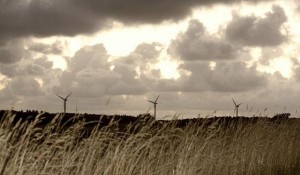 RAN has been ramping up the dialogue against coal, calling for an end to new coal-fired power plants and for existing coal plants to be retired (these currently make up over 45% of total US energy generation).
RAN has been ramping up the dialogue against coal, calling for an end to new coal-fired power plants and for existing coal plants to be retired (these currently make up over 45% of total US energy generation).
The coal industry argues that coal technology is already available while renewable energy technology is a pipe-dream that hasn’t yet been developed enough to supply energy en masse. Well, let’s not forget an important point — renewable energy is already being utilized. And not only on a small scale.
Take, for example, the Thisted municipality in Denmark, which uses 100% renewable resources for its electricity demands and 85% renewable energy for heating demands to supply over 46,000 residents. Thisted’s success can largely be attributed to the community’s focus on the local economic benefits of shifts to renewable energy, the constant re-evaluation of its programs to achieve continual improvement, and inclusion of local leadership.
[vimeo 1754867 550]
Thisted is situated in Northern Jutland, an ideal location for utilizing windmills because of its strong, constant wind almost year round. Thisted has 226 windmills throughout the municipality that generate 103 GwH hours of energy each year. Thisted is also home to Denmark’s first geothermal facility, which produces another 10% of electricity needs.
Another significant source of Thisted’s electricity is provided by biomass — a combination of landfill incineration (which RAN acknowledges can have detrimental impacts on local communities, see GAIA to learn more) and straw burning plants.
As an example of the constant inclusion of locals and an expanding business plan, the municipality purchases the 8700 tons of straw it burns each year from the farmers, who otherwise would have discarded the straw as waste.
Since Thisted’s switch to lower carbon energy sources, customers have seen their energy bills fall by two-thirds.
Movements such as Thisted’s are being referred to as the “Third Industrial Revolution,” the transition from fossil fuels to renewable energy sources. Community-led initiatives offer a better environment to live in by leaving nature in tact as much as possible, while always keeping sight of the financial benefits for the local society. The people of Thisted did not wait for large grants, corporations, or subsidies to start their conversion.
Thisted wants to keep the bar of energy achievement high. The municipality has pledged to further reduce their greenhouse gas emissions by 3% each year, until 2025. The largest project being considered is a network that will connect district farmers who are producing more than enough energy to run their respective farms, to a municipal grid where the farmers can sell their surplus energy.
Thisted is a reminder that small steps, perseverance, and local commitment can lead to larger, sustainable change. Their commitment to forward thinking and proactive measures are a beautiful example of community action and decision-making.